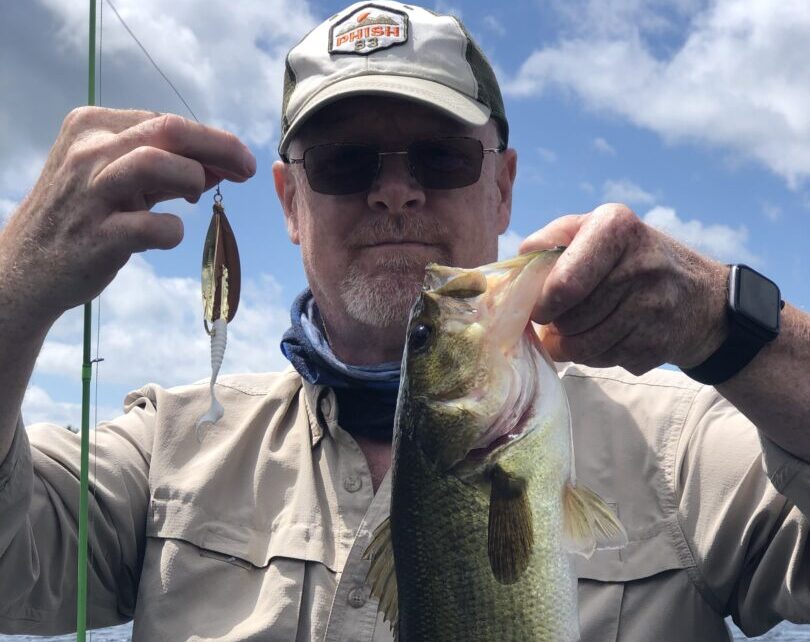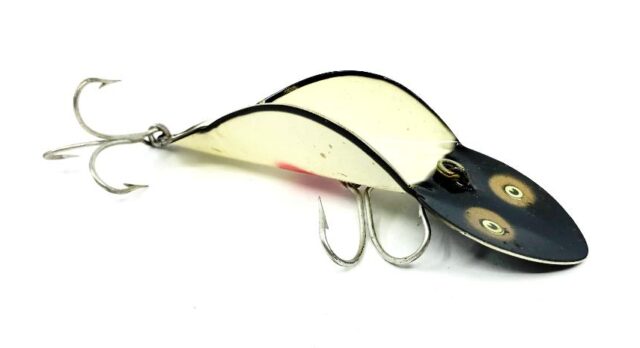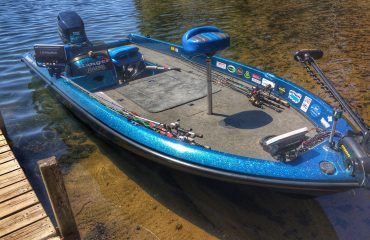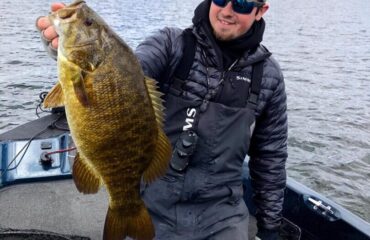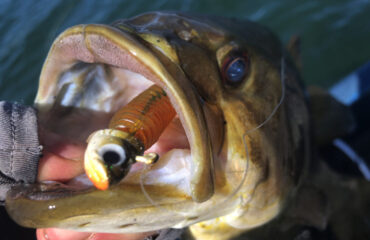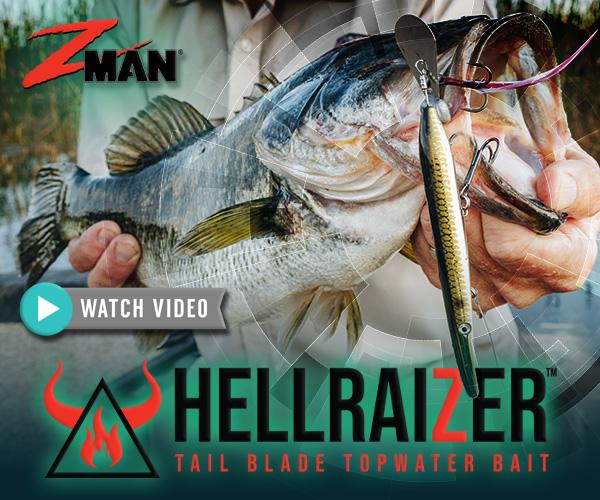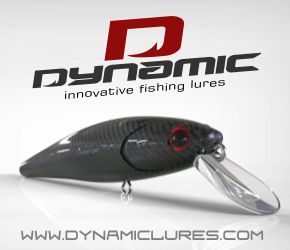Forgotten Lures
Last summer (2022), the household had an awakening. My dad, packing for a vacation to the Colorado Rockies, had requested I furnish him with a travel kit to be able to catch trout from the mountain streams. Digging thru my storage shelves for trout-friendly lures, I pulled out a large Plano stowaway of Mepps and Blue Fox spinners he and I had hoarded together since he began during the 1980’s. It had been more than a few years since this box was last opened. An absolutely loaded, magnificent collection of in-line spinners, dressed and undressed in all colors shapes and styles, with an array of blade sizes from as small as #0 to as large as #6. Most of them well used, others still mint. Retail value in the several hundreds, and the memories priceless. Forgotten lures we’ve used frequently in the past, but rarely now.
I packed him a travel kit, and then I went looking for other misplaced treasures that included our old vintage Rapalas and spoons, and retro collection of marabou jigs. More forgotten lures.
Decade-by-decade, year-by-year, sport fishing evolves. New lure manufacturers come and go. Some get acquired, merged and consolidated. The most popular and successful name brands remain, and eventually go unchanged for generations while selling millions of dollars in product. Trends and fads catch on quickly like California wild fire, eventually to get doused to the point of forgotten.
The rage of acquiring a “hot” new lure is nothing new to consumers. The excitement of buying the next hot lure has been ongoing since lure manufacturing processes started modernizing in the 1960’s and 70’s. Why did certain lures popular during my youth 30 years ago fall to the wayside? They couldn’t have stopped working all of a sudden. Or did we simply forget?
While anglers are the trend-setters and manufacturing enablers, and the ones who forget, every catchable fish species doesn’t know anything about forgotten lures. They probably became overlooked in the first place because of poor marketing tactics in addition to the explosion of hot new lures overtaking their sales and market share rather than their fish catching deficiencies.
With the advent of new lure concepts, and the technological advances in manufacturing, design, and mass production, it’s no wonder why certain lures have taken the back seat in the boats of many anglers.
Let’s take the rapidly-growing smallmouth bass fishing demographic of angler for example. A majority of today’s best smallmouth anglers are fishing with sophisticated gear, fixated on the latest technological advances in Japanese manufactured tackle (JDM), and also preoccupying themselves with rigs named after states, cities, or countries. While these could be the best fish catchers in the present, they might not continue to be in the future. It all hinges upon fisheries supply and demand, fishing pressure in conjunction with today’s generation of smallmouths conditioning to them, and then simply losing angler popularity over time. I guarantee you today’s generation of smallmouth bass hasn’t seen very many in-line spinners blowing past them such as Mepp’s #4’s and 5’s, crankbaits like the original Rebel Craw, or classic topwaters like the Arbogast Jitterbug and Heddon Torpedo. Unconditioned to today’s fish, these forgotten lures still catch aplenty like they all did in the 1970’s and 80’s. With today’s rods, reels, and line choices, I bet these baits catch fish with better efficiency and success than they did ever before.
Since my recent return to old-school fishing tactics and tricks, I’ve located several more forgotten lures I had in storage. In no way is this list all-inclusive, but rather lures I’ve re-located and remembered from past personal experiences with high fishing success. And the good news for catching today’s generation of fish is they’re still manufactured and get seldom used by anglers. These old baits are still secret weapons.
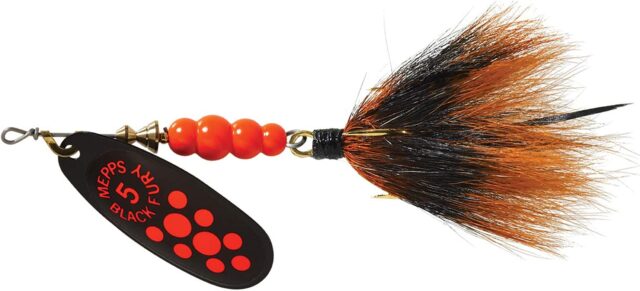
Mepp’s Inline Spinners
Inline spinners have successfully lured fish into biting for over 100 years. Wisconsin sporting-goods store owner, Todd Sheldon began importing them from France in 1951. 70 years later, the Aglia accounts for more than 50% of the Mepp’s business.
Whether wading or floating by boat, I have caught more river smallmouths up to 5 pounds on a Mepps #4 and #5 Black Fury spinner than any other lure. Likewise, my first ever muskies back in the early-2000’s were captured on a firetiger #3 dressed Aglia. Mepps in-lines are solely responsible for how I even began to fish for smallmouths and muskies in the first place.
In rivers and streams, an inline spinner is hard to beat when burned through the seams of current, past boulders, and downed timber. In most river fishing situations, inlines with no. 4 and 5 blades in an assortment of fluorescents and darks are excellent choices for catching fish. Meanwhile anglers who fish lakes will find the same inline spinner choices to be outstanding too.
Across many multi-species fisheries, expect the mixed bag.
We all know that pike continue to go nuts for them across northern natural lakes, the Canadian Shield, and into the Arctic Circle.
They’re worthy of take-down for trophy largemouths too. As a child in Wisconsin, I witnessed some very large fish fall to a #5 white Aglia. Specimens pushing 7 and 8 pounds.
Inline spinners are lethal fish catchers and today’s generation of fish aren’t seeing many of them.
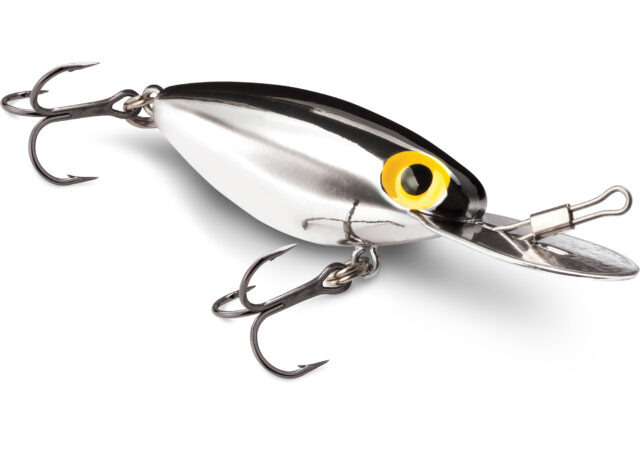
Hot-N-Tots
An oldie but a goodie, the Hot ‘N Tot is an outstanding deep diving crankbait with an indestructible metal diving lip. Lure collectors and high rollers would attest that vintage, pre-Rapala Hot-N-Tots are the best ever for their construction, durability, and unique powerful action. Whether fish realize this also, I am not so sure. Thankfully I inherited a few retros from my father. If you are able to acquire through eBay, they won’t come cheap.
The vintage Hot ‘N Tot avoids snagging and comes in a variety of good colors. The lure has a wide side-to-side swing on retrieve and worked in shallow and deep applications. The colors I own are blue back and silver chrome.
These cranks were and still are in a league of their own. Back in 1971, William D. Storm, of Norman, OK, applied for a patent to protect his creation from imitation. Issued in 1973 to Storm Plastics, Inc., the Hot-N-Tot hasn’t been imitated or replicated by anyone else for over 50 years!
What spurred my interest with the Hot-N-Tot came on an August, 2015 trip at Lake of the Woods, Ontario. Fishing the Northwest Angle, my group struggled mightily to catch fish that week. The LOTW standard black/nickel bucktail and topwater bite was not happening. The group of non-musky anglers lodging in the cabin next to us had things figured out. Powers beyond our control influenced muskies to set up along the edges of near-shore rock walls – unfishable locations to most casting presentations. Those 3 guys in the cabin next door proceeded to single-line troll Hot-N-Tots along the walls and ledges. Each day that week was an unbelievable success story for them. They proceeded to catch over 25 muskies that week with fish up to 53”. I’ll never forget it. I will never forget the time either when the entire lake got schooled by the F’n Hot-N-Tot!
Since that forgetful fishing week friends and I have made sure to always return with a few Hot-N-Tots, just in case.
Spoonplugs
Buck Perry started the modern era of freshwater sportfishing. He is the Father of Structure Fishing. The ways in which we seek fish and operate on the water for deep, structure-oriented fish are modeled by Perry.
Now regarding spoonplugs, has there been a more genius fish catching tool or method ever invented in the history of fishing?
To this day, trolling remains the best and most efficient way to eliminate large expanses of water. Across many of the nation’s lakes and reservoirs, trolling is the best strategy. As illustrated by Perry and many of today’s modern trolling aces, it’s an art.
Spoonplugs were unique back in the day, and remains unique today because it will run at a very specific depth regardless of how fast it is trolled or retrieved. Spoonplugs won’t win any beauty contests, but what they continue to do is catch fish.
In today’s modern era, spoonplugging aces Jim Shell of “Structurefishing” and Jerry Borst continue to illustrate and prove just how applicable it is to our waters and their present fisheries. Impressively, they’re both doing it down on my other local fisheries in Illinois.
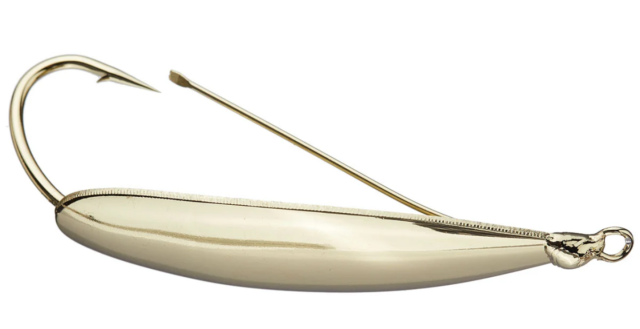
Johnson Silver Minnows
Don’t hide these weedless wonders in your garage or elsewhere in storage. Even though it was invented 100 years ago, it continues to produce. I bet at some point your fishing career began by usage of a silver minnow.
It’s the original swimming bladed bait. The concept and properties have been partially replicated by more popular swim jigs, spinnerbaits and bladed jigs that we all are using more frequently. The Silver Minnow looks like nothing available in nature, but has a flash and wobble that appeals to bass, pike, and other gamefish.
My boat rediscovered the fishability and fish intrigue of silver minnows in 2020. Guide customer Jason Norris brings a handful of his favorites on every largemouth trip we go on, putting on a mixed bag clinic. Few weedless baits can run true and without hiccup through weeds, reeds, pads or wood like Silver Minnows can. Sharpen the hook, and dress it with a rubber skirt or tip it with your favorite soft plastic trailer. You’re bound to catch plenty of largemouths, pike, and other curious species that dwell in cover.
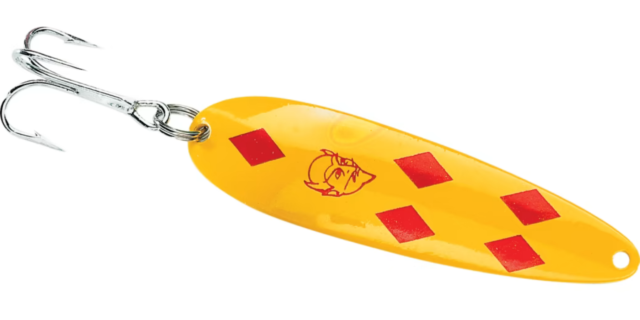
Eppinger Daredevle Spoons
Eppinger Daredevles have been a tackle box staple for many generations. Most of the Daredevle spoons I own are now third-generation, acquired by my grandpa during the 1950’s and 60’s. Many others I have were also gifted to me.
Without question, the Dardevle is one of the most popular and recognizable spoons ever created. The curved red-and-white striped, concave design has been catching fish for many generations and has been a familiar fixture in tackle boxes for over a century. It is also one of the most copied commercial lures in the history of lure manufacturing.
Cast, trolled, and jigged, it catches pike, muskies, walleyes, trout, salmon, and bass. In the ocean, it catches a lot more fish species too. Some of the world’s largest fish captured fell to the wobble of the spoon.
You don’t need to have just the original white and red. For instance, Canadian anglers swear by the “Five of Diamonds” for trophy northern pike. Meanwhile on the Great Lakes, trout and salmon anglers troll the open waters and cast the harbors with popular glow patterns and hammered chromes.
When I go pike fishing, I remember to bring a handful of my old favorites. When at the right place and right time, fish continue to go crazy for a Daredevle.
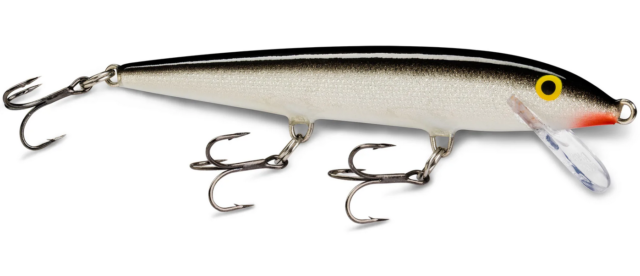
Original Rapala Floating Minnow
In 1936 Lauri Rapala created the prototype for what became one the world’s most famous lures, the Original Floating Rapala Minnow. Its popularity in the U.S. didn’t take off until the early 1960’s.
Today, the Rapala Original remains a fixture in American anglers’ tackle boxes. As a child I caught my first ever largemouth bass on the #7 minnow. To date, the #11 and #13 in black/silver and perch have caught my largest northern pike and walleyes from local Northern Illinois river systems. On my waters of Wisconsin and Illinois, I don’t wade any river after dark for walleyes without a box of my original floaters. They continue to produce everywhere.
Whether twitched as a surface lure for bass, cast and retrieved as a shallow runner, or trolled with, the Original Floater delivers the wounded minnow action that others continue to imitate but can never duplicate.
Never put them away. If it’s big fish you’re after, you should consider fishing with these again.
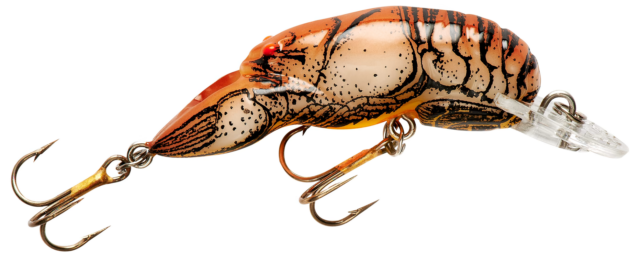
Rebel Craws
The Rebel Wee Crawfish is the original realistic crawfish crankbait. Back in 1962, Rebel Lures was the first to introduce plastic molded lures with its Rebel Minnow. It wasn’t long after when the Rebel Craw was invented.
I’m willing to bet most smallmouth bass anglers got their introduction to these sport fish with Rebel Craws. The wee-craw was my go-to on rivers and creeks. Today, the Rebel Big Craw continues to be a producer on my lake and river fisheries.
Since the 1970’s, many replicated crankbaits have been tried but failed. No other crankbait mimics the fleeing action of a crawfish like a Rebel Craw. Smallmouths still go crazy for it.
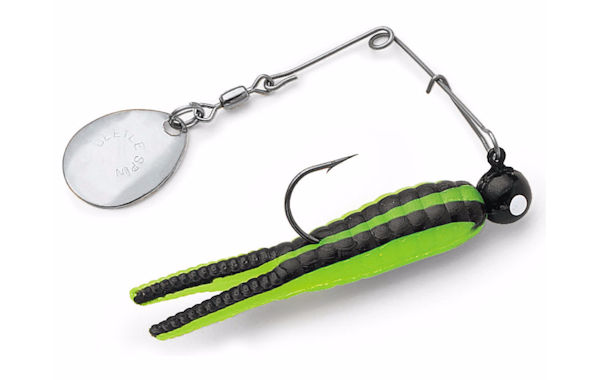
The Beetle Spin
No other lure gets poked fun of more than the Beetle Spin, the original safety pin spinner bait popularized and brought to the mainstream by Virgil Ward.
The Beetle Spin came to form in 1951 when Chuck Wood concocted a safety pin spinnerbait using a single undersized Colorado blade. Similarly, this simple concept has led to the concoction and variations of other safety-pin baits.
Don’t laugh – From a young age, my dad and I often concocted our own safety-pin spinners. Instead of primarily fishing with the Beetle Spin bodies, we sometimes fared better with a twistertail or paddletail body depending on preference. We also took it further, creating our own safety-pin spinner marabou jigs, clipping a #3 size Cabela’s hologram nickel spinner to a 1/8 oz. and ¼ oz. chartreuse marabou jig. We’d then tip the package with a live fathead minnow or redtail chub. The big largemouths we caught with this thing from northwoods lakes was staggering. Not only did it grab the attention of big largemouths, but pike, walleyes and muskies too.
However you fish or tinker with them, Beetle Spins continue to be productive little search baits. They’re great for introducing newcomers to fishing, easy to fish with, keep catching fish, can do a whole lot, and are frugal.
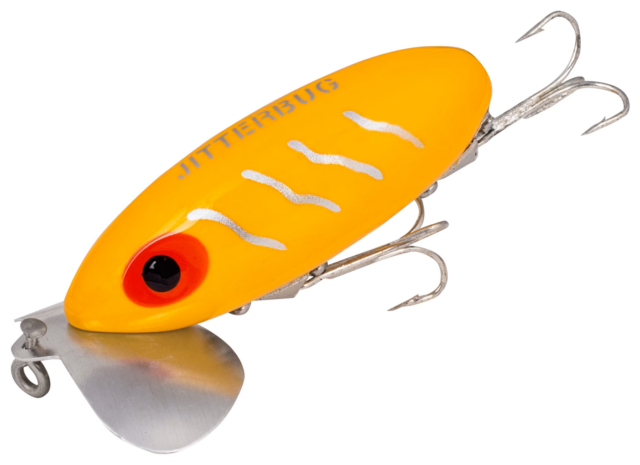
Arbogast Jitterbug
This deadly topwater lure still works well today.
The original wake bait and surface creeper lure designed for bass, anglers have relied on the Arbogast Jitterbug for more than 80 years. It continues to set the standard for nighttime topwater lures for largemouths, and is also a well-documented big fish producer in the daytime for smallmouths.
The Jitterbug’s double cupped lip, placed at precisely the correct angle, produces the loud, rhythmic, surface-busting sound that is proven to be irresistible to every known surface feeding fish.
My fondest memory of the Jitterbug is with smallmouths on my northwoods lakes. On the steamy, hot, dog days of August we rely on it if a surface bite establishes. Fishing them is often simple too, requiring nothing more than casts up to rocky and wooded shorelines. The Jitterbug 600 (1/4 oz.) in yellow is my personal favorite. For this exact strategy, I still carry a handful of vintage Jitterbugs in my topwater box. They cast and displace (push) water so much better than modern models.
Old surface lure designs like this one are just as effective as modern lures when used under the right conditions and situations. They are particularly effective in small waters that can be fished thoroughly in a given period of time. Very few bass, if any, have ever seen these baits.

Lunker City Slug-Go’s
I feel like the Slug-go has lost its luster since the 1980’s and 90’s. And I know today’s generation of smallmouths would go stupid for them, judging by how they strike similar, more popular fluke minnows when this bite peaks.
Few soft plastics have been more influential than the Lunker City Slug-Go. When it was initially released in the 1980s by its inventor, Herb Reed, it was the first soft-plastic lure that could consistently elicit vicious reaction strikes from bass. Anglers didn’t buy them in hoards like they do with many new baits now, but it soon became one of the best-selling plastics of the 1990’s after tournament victories followed by some of the best fishing journalism how-to’s and instruction ever delivered by the legendary Rich Zeleski.
Three decades later, the Slug-Go is just as effective as it once was 40 years ago. Today, nearly every soft plastic company makes a soft jerkbait.
In the late 1990’s, I often fished the downsized 3” Baby Slug-Go’s for clear water largemouths in the extreme shallows. Texas rigged, I tossed them with spinning gear deep into shoreline cover. Many good fish were extracted by this method. And then guess what happened over time? I forgot all about it.
The Slug-Go comes alive in the water. If you rig and fish them exactly as Zaleski wrote in the famous Book #91 of In-Fisherman published in March, 1990, you will achieve the same action that makes them so deadly.
Today, Slug-Go’s are being re-discovered by new generations of anglers, who eventually come to light there is no substitute for the original Slug-Go. Is it a worm? A leech? Or a minnow? The Slug-Go is everything you want it to be.
It’s the Indian, not the arrow. Fishing has never been so complicated like it is now. Ultimately, it is we who over-complicate things ourselves. The roots of perfect angling are in simplicity. It is much more beneficial for you to acquire several well-rounded techniques and rigging methods than having a hoard of misplaced, forgotten lures that are seldomly fished.
Besides more fishing pressure and technological advancements, fish aren’t much different today than they were a generation ago. Fish do not read the labels on lure packaging like we do, or only bite the newest baits like marketing experts perceive them to. Today, I can still catch fish consistently with each of the forgotten lures I’ve highlighted. They work just as well now as they did several years ago.
Go find and revisit your own forgotten lures.
Andrew Ragas splits time between the Chicago area and Wisconsin’s Northwoods. Based in Minocqua, WI, he specializes in trophy bass fishing and offers guided trips from May thru October. While big bass is the passion, he dabbles in multi-species as well. He may be visited online at www.northwoodsbass.com


